What is DEI training: Everything you need to know

In today's dynamic and interconnected world, organizations are increasingly recognizing the criticality of Diversity, Equity, and Inclusion (DEI) training. This transformative approach equips employees with the knowledge and skills to embrace differences, challenge biases, and foster a truly inclusive workplace culture.
From dismantling systemic barriers to driving innovation and enhancing employee well-being, DEI training holds the key to unlocking the full potential of organizations.
Let's discover the importance of DEI training and gain valuable tips on how to create impactful programs that drive meaningful change and cultivate inclusive environments.
What is DEI training?

Diversity, Equity, and Inclusion training, refers to educational programs and initiatives designed to promote understanding, awareness, and inclusion of individuals from diverse backgrounds within an organization.
This training aims to foster a culture of respect, equality, and appreciation for differences while addressing systemic biases and barriers. It typically covers topics such as unconscious bias, cultural competency, inclusive leadership, inclusive management training, and creating equitable work environments.
DEI training helps organizations cultivate a more, leading to improved employee engagement, innovation, and overall business success.
What is the role of training in DEI?

Have you ever wondered how organizations cultivate workplaces where diversity thrives, biases are challenged, and everyone feels included? That's where DEI training steps in as a powerful catalyst for change. Let's dive into the crucial role that training plays in creating a more equitable and inclusive work environment:
- Raising awareness: DEI training shines a light on the significance of diversity, equity, and inclusion. It helps employees understand the value of different perspectives and experiences, fostering a culture where everyone's uniqueness is celebrated.
- Unmasking unconscious bias: We all carry bias that can affect our decisions without us even realizing it. DEI unconscious bias training unveils these biases, equipping individuals with the tools to recognize and counteract them, leading to fairer and more unbiased decision-making.
- Cultivating empathy: Training programs encourage participants to step into others' shoes. By sharing stories and experiences from various backgrounds, training nurtures empathy and understanding, creating a more compassionate workplace.
- Fostering inclusive practices: Through interactive exercises, DEI training teaches inclusive language, behavior, and communication. This results in improved collaboration, as colleagues learn how to navigate conversations with respect and openness.
- Empowering change agents: DEI training empowers employees to become advocates for change. By educating them on allyship, active listening, and standing up against discrimination, training nurtures a network of change agents within the organization.
- Aligning with business goals: Inclusive organizations tend to be more innovative and attractive to top talent. DEI training ensures that diversity isn't just a buzzword but a strategic driver of business success, enhancing creativity and competitive advantage.
- Creating lasting culture shifts: DEI training isn't a one-time event but a continuous journey. It fosters a mindset shift, influencing how employees interact, collaborate, and view diversity. Over time, this helps shape a company culture where everyone feels valued and heard.
- Building leadership competencies: DEI training equips leaders with the necessary skills to manage diverse teams effectively. By fostering inclusive leadership practices, training helps leaders create an environment where all team members can thrive, driving better performance and employee satisfaction.
- Enhancing employee engagement: When employees feel included and valued, their engagement levels increase. DEI training helps in creating a workplace where every voice matters, leading to higher morale, reduced turnover, and a more committed workforce.
- Addressing systemic inequalities: DEI training not only focuses on individual behavior but also on identifying and dismantling systemic barriers within the organization. By addressing these structural issues, training contributes to a more equitable workplace, ensuring that all employees have equal opportunities to succeed.
In a world where diversity is a strength, DEI training acts as the compass guiding organizations toward a more equitable and inclusive future.
What is the difference between D&I and DEI?

Have you ever wondered about the alphabet soup of workplace initiatives – D&I and DEI? You're not alone! Let's break it down and explore the difference between these two important concepts in creating inclusive workplaces.
D&I: Diversity and inclusion
Think of D&I as the first step in the journey. Diversity focuses on bringing together individuals with various backgrounds, such as race, gender, age, and more. It's like gathering a group of different puzzle pieces.
Inclusion, on the other hand, is about ensuring that every puzzle piece feels like it belongs in the bigger picture. It's about creating an environment where diverse voices are heard, valued, and integrated into decision-making processes.
DEI: Diversity, equity, and inclusion
Now, imagine taking D&I and elevating it to the next level. That's where DEI comes in. While diversity and inclusion remain crucial, equity is the extra ingredient that makes DEI truly transformative.
Equity focuses on leveling the playing field. It's about recognizing that not everyone starts with the same advantages, and it's the organization's responsibility to provide fair opportunities for all – regardless of their background.
In essence, while D&I is about inviting everyone to the party, DEI is about ensuring that everyone gets to dance, enjoy the music, and have an equal say in how the party is organized.
It's about addressing systemic barriers, fostering a sense of belonging, and creating a workplace where individuals are not only present but are empowered to participate fully.
Importance of DEI training programs

DEI (Diversity, Equity, and Inclusion) training programs hold immense importance in today's organizations. They are crucial for fostering inclusive cultures, mitigating biases, enhancing creativity and innovation, attracting top talent, improving customer relations, meeting legal and ethical obligations, and driving business success.
Research by McKinsey reveals that companies with diverse executive teams outperform less diverse counterparts by 25% in profitability.
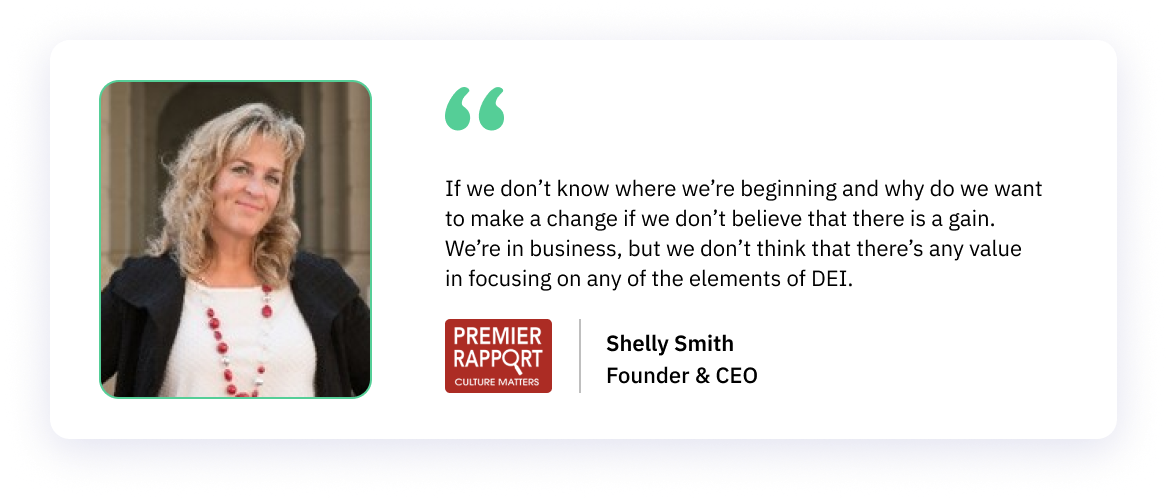
DEI training equips employees with the skills and awareness needed to create diverse and inclusive workplaces, leading to higher employee engagement, improved decision-making, and better overall organizational performance.
5 DEI statistics that you should know!
- According to HBR, diverse companies have a 70% higher likelihood of tapping into new markets successfully.
- Glassdoor's data indicates that 76% of job seekers consider a diverse workforce crucial when selecting an employer.
- As reported by BCG, companies with above-average diversity in their management teams also exhibit innovation revenue that surpasses companies with below-average leadership diversity by 19 percentage points.
- InStride's findings show that 92% of business leaders concur that a strategic workforce education program should play a role in helping an organization meet its diversity and inclusion objectives.
- In a survey by Glassdoor, 69% of executives emphasize the importance of diversity and inclusion, highlighting it as a significant concern.
Benefits of DEI training in the workplace
Diversity, Equity, and Inclusion (DEI) training offers numerous benefits that extend beyond compliance and create a more dynamic, innovative, and cohesive workplace. Here are nine detailed benefits of implementing DEI training within an organization:
- Improved team collaboration: Diversity training programs teach effective communication and collaboration skills among diverse teams. This results in better teamwork, as employees learn to appreciate different perspectives and work cohesively towards common goals.
- Increased innovation: A diverse workforce brings a variety of viewpoints and ideas. DEI training encourages the expression of these unique perspectives, driving creativity and innovation within the organization.
- Better decision-making: Inclusive teams are known to make better decisions. DEI training helps employees recognize and mitigate biases, leading to more balanced and fair decision-making processes.
- Enhanced company reputation: Organizations that prioritize DEI are viewed more favorably by clients, customers, and the public. DEI training helps build a positive corporate image, attracting top talent and loyal customers.
- Higher retention rates: When employees feel included and valued, they are more likely to remain with the organization. DEI training helps reduce turnover rates by fostering a supportive and inclusive workplace culture.
- Reduced workplace conflicts: Training on cultural competence and bias mitigation reduces misunderstandings and conflicts. Employees learn to navigate differences with respect and empathy, creating a more harmonious work environment.
- Greater market reach: A diverse workforce can better understand and serve diverse customer bases. DEI training equips employees with the skills to engage with a broader market, enhancing customer satisfaction and loyalty.
- Compliance and risk mitigation: DEI training helps organizations comply with legal and regulatory requirements related to diversity and anti-discrimination. It also mitigates the risk of lawsuits and reputational damage resulting from non-compliance or discriminatory practices.
- Sustainable culture change: DEI training promotes long-term cultural shifts within organizations. By continuously educating employees and reinforcing inclusive values, training ensures that DEI principles are deeply embedded in the organizational culture.
What are the objectives of DEI training?
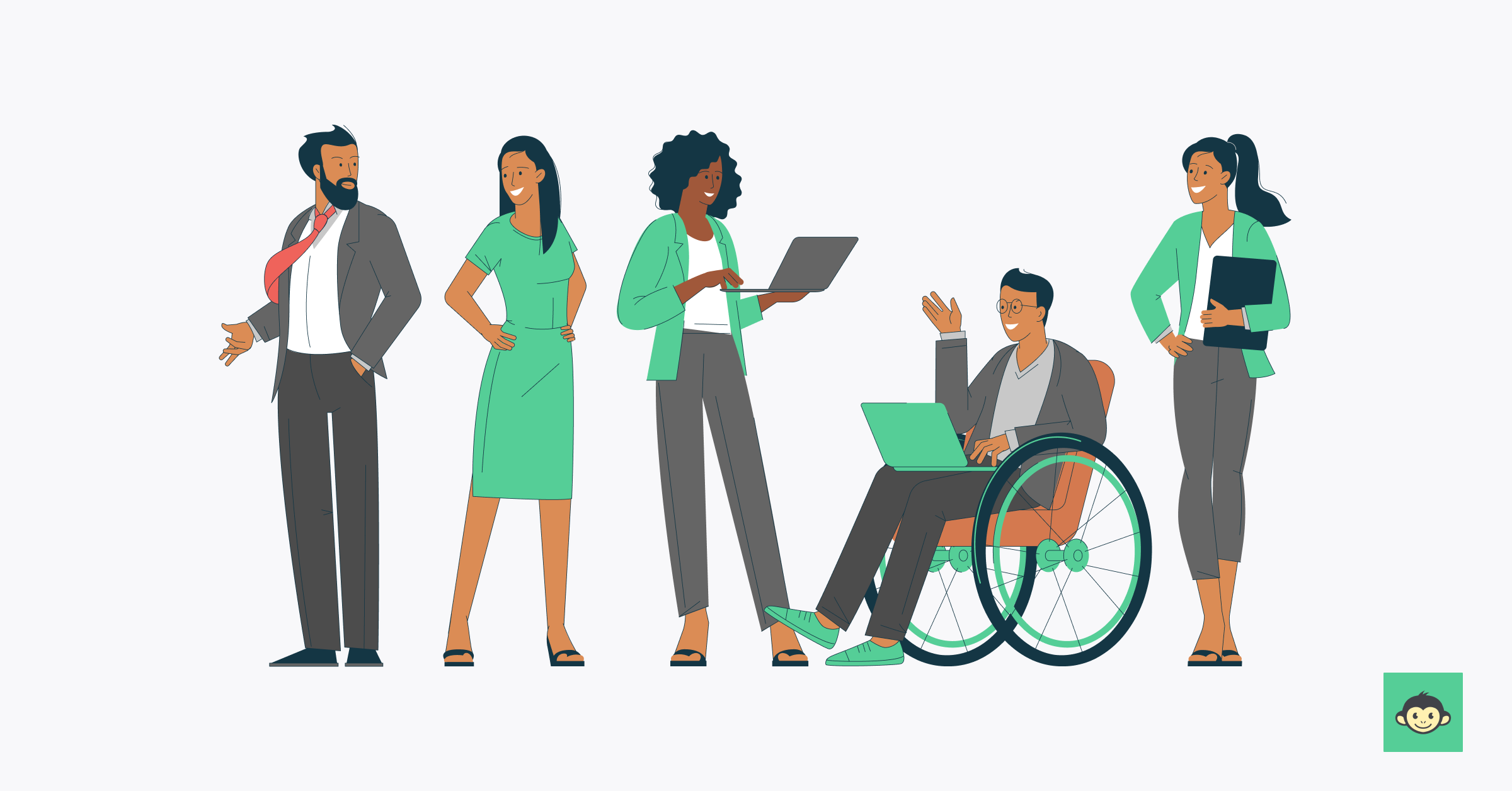
The objectives of DEI (Diversity, Equity, and Inclusion) training programs are multi-faceted and aimed at achieving various outcomes. Here are the key objectives of the DEI program and training:
Promoting awareness: DEI training aims to increase awareness among employees about the importance of diversity, equity, and inclusion in the workplace. Cultural sensitivity training helps individuals recognize and understand the value of different perspectives, experiences, and backgrounds.
Mitigating unconscious bias: DEI training seeks to address unconscious biases that can affect decision-making and interpersonal relationships. By educating employees about these biases and providing strategies to mitigate them, training programs help create a more fair and equitable work environment.
Enhancing cultural competence: DEI training aims to develop employees' cultural competence, enabling them to navigate and appreciate diverse cultures, customs, and traditions. It helps individuals gain the knowledge and skills necessary to interact respectfully and effectively with colleagues and clients from various backgrounds.
Encouraging inclusive leadership: DEI training focuses on cultivating inclusive leadership behaviors. It provides leaders with the tools to create an inclusive culture, empower diverse teams, and leverage the strengths of each individual, thereby maximizing team performance and innovation.
Building collaborative skills: DEI training emphasizes the importance of collaboration and teamwork across diverse groups. It equips employees with the skills to communicate effectively, resolve conflicts, and leverage the collective intelligence of diverse teams. A study even suggested that diverse teams are smarter than their non diverse counterparts.
Strengthening organizational culture: DEI training programs contribute to developing and strengthening an inclusive organizational culture. By aligning values, policies, and practices with diversity and inclusion principles, training helps foster a company culture where all employees feel respected, valued, and empowered.
Driving business results: Ultimately, DEI training aims to drive business results. Research has shown that diverse and inclusive organizations tend to outperform their counterparts by fostering innovation, attracting top talent, enhancing customer relations, and improving employee engagement and productivity.
Fostering allyship: DEI training endeavors to foster allyship among employees. By educating individuals about the importance of advocating for and supporting marginalized colleagues, training helps create a workplace where everyone actively contributes to promoting diversity, equity, and inclusion.
Addressing microaggressions: DEI training targets the recognition and mitigation of microaggressions. These subtle, often unintentional behaviors or comments can significantly impact individuals from marginalized groups. By providing employees with tools to identify and address microaggressions, training ensures a more respectful and inclusive workplace where people feel safe and valued.
Cultivating inclusive communication: DEI training focuses on developing inclusive communication skills. It teaches employees how to use language that respects different identities and experiences, avoiding exclusionary language and fostering open, empathetic dialogue.
Promoting equal opportunity: DEI training emphasizes the importance of equal opportunity and equitable treatment for all employees. It aims to eliminate systemic barriers that prevent underrepresented individuals from accessing the same opportunities for growth and advancement. By promoting fairness in all aspects of employment, training contributes to a more just and meritocratic workplace.
Understanding intersectionality: DEI training expands employees' understanding of intersectionality—the interconnected nature of social identities and the unique challenges faced by individuals with multiple marginalized identities. Training helps individuals appreciate the complexity of each person's experiences and fosters empathy, allowing for more meaningful connections and collaborations across diverse groups.
Supporting mental health and well-being: DEI training aims to highlight the impact of inclusive environments on employees' mental health and well-being. By addressing issues such as workplace stress, discrimination, and social isolation, training helps create a supportive atmosphere where mental health is prioritized, leading to a more resilient workforce.
Facilitating policy development: DEI training supports the creation and implementation of policies that promote diversity, equity, and inclusion. It guides organizations in developing fair practices and procedures, ensuring that DEI principles are embedded in every aspect of the business.
Encouraging continuous learning: DEI training promotes a culture of continuous learning and growth. By encouraging employees to regularly engage in DEI education and self-reflection, organizations can ensure that their workforce remains knowledgeable and adaptable to the evolving landscape of diversity and inclusion.
Enhancing community relations: DEI training aims to improve an organization's relationship with the broader community. By promoting social responsibility and community engagement, training helps organizations build stronger connections and positively impact the communities they serve, reflecting their commitment to DEI principles.
By setting these objectives, DEI training programs play a vital role in creating more inclusive workplaces, fostering understanding and appreciation of diversity, and driving positive business outcomes.
Types of DEI training
Diversity, Equity, and Inclusion (DEI) training encompasses various approaches tailored to foster a more inclusive and equitable workplace. Understanding the types of DEI training available can help organizations select the most appropriate methods to meet their specific needs and objectives.
Here are the primary types of DEI training:
- Unconscious bias training: This type of training focuses on identifying and mitigating hidden biases that affect decision-making and behavior. By uncovering these subconscious attitudes, employees can learn strategies to counteract biases, leading to more impartial and fair interactions.
- Cultural competency training: Aimed at enhancing employees' understanding and appreciation of diverse cultures, this training equips individuals with the knowledge and skills necessary to interact effectively with people from various backgrounds. It emphasizes respecting different customs, traditions, and perspectives, fostering a more harmonious and productive work environment.
- Inclusive leadership training: This training is designed for leaders and managers, focusing on cultivating leadership practices that promote inclusivity. It provides tools and strategies for empowering diverse teams, leveraging individual strengths, and creating an environment where all employees feel valued and supported.
- Allyship training: Allyship training educates employees on how to support and advocate for marginalized colleagues. It covers the importance of standing up against discrimination, practicing active listening, and using one's privilege to foster an inclusive workplace culture.
- Microaggressions training: This type of training addresses subtle, often unintentional behaviors or comments that can negatively impact marginalized individuals. By teaching employees to recognize and respond to microaggressions, organizations can create a more respectful and inclusive environment where everyone feels safe and valued.
What are the concepts of DEI training?

DEI (Diversity, Equity, and Inclusion) training encompasses various key concepts aimed at doing awareness training promoting understanding, awareness, and inclusivity. Here are the core concepts of DEI training:
Diversity
This concept recognizes and values the presence of different types of individuals from different backgrounds, such as race, ethnicity, gender, age, sexual orientation, ability, and more. DEI training emphasizes the importance of diverse perspectives and experiences in enriching organizations.
Equity
Equity focuses on ensuring fairness and justice in the distribution of resources, opportunities, and outcomes. DEI training aims to address systemic biases and create environments where everyone has equal access to opportunities and is treated fairly.
Inclusion
Inclusion refers to creating an environment where every individual feels valued, respected, and supported. DEI training emphasizes fostering a culture where diverse voices are heard, contributions from diverse employees are acknowledged, and individuals can fully participate without facing discrimination or exclusion.
Unconscious bias
DEI training addresses unconscious biases, which are automatic, ingrained attitudes or stereotypes that influence our perceptions and decision-making. By raising awareness about these biases, training helps individuals recognize and mitigate their impact on interactions and decision-making processes.
Allyship
Allyship is the act of actively supporting and advocating for individuals from marginalized or underrepresented groups. DEI training encourages individuals to be allies by challenging biases, amplifying marginalized voices, and taking action to create more inclusive environments.
Systemic change
DEI training emphasizes the need for systemic change to address and dismantle organizational barriers and biases. It encourages examining policies, practices, and structures to create equitable and inclusive systems.
Cultural competency
Cultural competency is a concept central to DEI training. It involves developing the knowledge, skills, and attitudes necessary to effectively interact with people from diverse backgrounds. DEI training promotes cultural competency by encouraging individuals to educate themselves about different cultures, customs, and traditions, enabling them to navigate cross-cultural interactions with sensitivity and respect.
Intersectionality
Intersectionality is a key concept that acknowledges the complex ways in which various social identities intersect and interact, leading to unique experiences of discrimination and privilege. DEI training emphasizes the importance of understanding intersectionality to recognize the multifaceted challenges faced by individuals.
Bystander intervention
Bystander intervention is a concept promoted by DEI training to empower individuals to take a proactive role in addressing instances of discrimination, workplace harassment, or exclusion. Training encourages employees to step in and support individuals who are targeted, creating a safer and more inclusive environment.
What are some of the most important DEI topics to cover?

DEI—is more than just jargon. It's about fostering a workplace where everyone feels valued and included. So, let's dive into some of the most important DEI training topics that deserve a front-row seat in any training:
- Unconscious bias: Ever made snap judgments without even realizing it? That's unconscious bias at play. Exploring this topic helps individuals understand how biases shape our perceptions and interactions, making us better equipped to challenge them.
- Microaggressions: Ever felt a sting from a seemingly harmless comment? Microaggressions are those subtle, often unintentional, digs that hurt. Covering this topic raises awareness and teaches participants to avoid these hurtful behaviors.
- Intersectionality: We're all a blend of identities—race, gender, age, and more. Intersectionality is about recognizing how these identities intersect and influence our experiences. It's like understanding the layers of a complex painting.
- Inclusive language: Language matters. Covering this topic educates participants on using inclusive language that respects diverse identities and avoids stereotypes.
- Allyship: Ever wanted to support a colleague but didn't know how? Allyship is about being an active advocate for marginalized groups. This topic offers tools for supporting colleagues and creating a more inclusive environment.
- Systemic racism: Unpacking systemic racism is essential for understanding the historical and structural barriers that certain groups face. It's like shining a light on hidden roadblocks that need dismantling.
- LGBTQ+ inclusion: Covering LGBTQ+ topics creates a safe space for individuals of all sexual orientations and gender identities. It's about fostering an environment where everyone can bring their whole selves to work.
- Accommodations and accessibility: DEI isn't just about identity—it's also about ensuring that everyone can participate fully. Addressing accommodations and accessibility is like opening the door for everyone to enter.
- Building inclusive teams: Diversity without inclusion is like a puzzle with missing pieces. This topic focuses on building teams that value and leverage diverse perspectives for better outcomes.
What makes for effective DEI training?
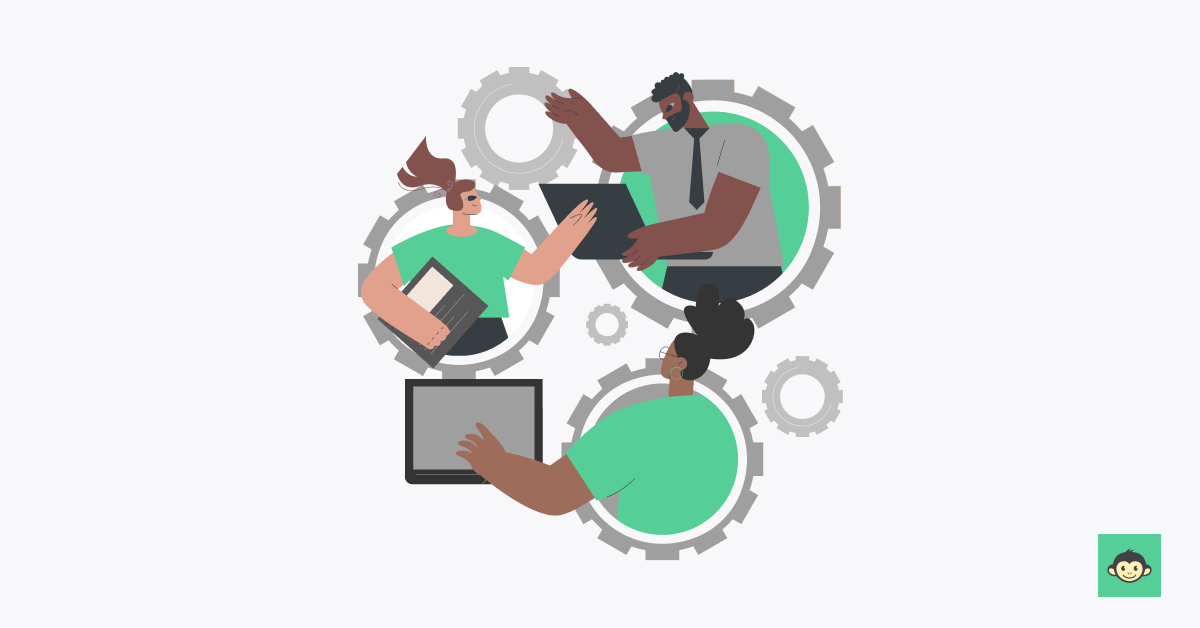
Ever been in a training that felt like a one-way ticket to snoozeville? When it comes to DEI (Diversity, Equity, and Inclusion) training, the stakes are higher. So, what's the secret sauce for making it actually effective?
- Engagement, engagement, engagement: Let's face it – if you're not engaged, your mind starts wandering to your grocery list. Effective DEI training keeps you on your toes. It uses interactive activities, real-life scenarios, and discussions that challenge your thinking.
- Personal connection: It's not about throwing stats and jargon at you. Effective DEI training taps into your emotions. It shares personal stories that resonate, making you think, "Hey, I can relate to that."
- Actionable strategies: Ever left a training thinking, "That was nice, but what do I do next?" Effective DEI training equips you with actionable strategies. It gives you tools to recognize and address bias, encourages you to speak up against discrimination, and teaches you how to foster inclusivity.
- Ongoing journey: DEI isn't a one-time workshop; it's a journey. Effective training acknowledges that. It inspires you to keep learning and growing, providing resources, book recommendations, or even follow-up sessions.
- Leadership buy-in: Imagine attending a workshop on inclusion, only to see the leaders behaving differently. Effective DEI training involves leaders who walk the talk. When they champion inclusivity, it sends a powerful message that it's not just lip service.
- Safe space: Ever hesitated to share your thoughts in a group? Effective DEI training creates a safe space. It encourages open dialogue, respects diverse opinions, and ensures that everyone's voice is heard and valued.
- Measurable outcomes: Effective DEI training isn't a shot in the dark. It sets clear goals and measures outcomes. It might involve pre- and post-training assessments to track your progress.
Why do leaders need DEI training?

Leaders need DEI (Diversity, Equity, and Inclusion) training to foster inclusive environments, mitigate biases, drive organizational change, attract and retain diverse talent, enhance customer relations, mitigate legal and reputational risks, and promote innovation and performance.
Research shows that inclusive leadership practices improve team performance and employee engagement. Diverse leadership teams have outperformed homogeneous teams in terms of innovation and financial results. DEI training equips leaders with the knowledge and skills to champion diversity, understand legal obligations, and create equitable work environments.
By prioritizing DEI training, leaders can create inclusive cultures, leverage diverse perspectives, and drive positive outcomes for their organizations.
What should be included in DEI training?

When designing DEI (Diversity, Equity, and Inclusion) training programs, it is essential to include key components that promote understanding, awareness, and behavioral change. Here are crucial elements to consider:
Inclusive leadership: Focus on developing inclusive leadership skills. Train leaders to create psychologically safe environments, foster diversity of thought, and actively advocate for equity and inclusion.
Intersectionality: Emphasize the interconnectedness of social identities. Explore how individuals' experiences are shaped by the intersection of race, gender, age, ability, and other dimensions, fostering an inclusive understanding of diversity.
Advocacy: Train employees on becoming allies and advocates for underrepresented groups. Teach active listening, amplifying marginalized voices, and taking action to create inclusive environments.
Policies and procedures: Address organizational policies and procedures that can perpetuate inequities. Provide clarity on fair practices related to hiring, promotions, and addressing biases in performance evaluations.
Continuous learning and evaluation: Promote ongoing learning by providing resources and opportunities for continued development. Evaluate the effectiveness of the training program through surveys, feedback, and measurable outcomes.
Microaggression awareness: Include training on identifying and addressing microaggressions in the workplace. Teach participants to recognize subtle forms of bias, such as comments or actions that unintentionally marginalize others. This empowers employees to create a more respectful and inclusive environment by interrupting and addressing these behaviors.
Cultural competence exercises: Incorporate interactive exercises that promote cultural competence. These exercises could involve role-playing scenarios, case studies, or simulations that allow participants to engage with real-world diversity challenges.
Implicit bias workshops: Offer workshops specifically dedicated to understanding and mitigating implicit bias. Provide insights into the science behind biases and offer strategies for reducing their impact in decision-making processes. These workshops empower participants to make more objective and equitable judgments.
Community engagement: Extend DEI training beyond the workplace by encouraging employees to engage with diverse communities. Arrange opportunities for volunteering, partnerships, or projects that involve collaboration with local organizations.
3 Steps for successful diversity training

Ever felt like you were in a diversity training that missed the mark? We've all been there. But fear not, because nailing successful diversity training is within reach. Here are three steps to make it happen:
Step 1: Tailored content
One size doesn't fit all. Effective diversity training starts by understanding your audience. Are they new hires, seasoned employees, or managers? Tailor the content to address their specific needs and challenges. When people see the relevance, they're more likely to engage.
Step 2: Interactive learning
Let's face it, no one wants to be lectured at for hours. Inject life into your training by incorporating interactive elements. Role-playing, case studies, and group discussions bring the concepts to life. When participants actively engage, they grasp the importance of diversity more deeply.
Step 3: Ongoing reinforcement
Diversity training isn't a one-and-done deal. For it to stick, you need to reinforce the lessons. This could mean follow-up workshops, discussion groups, or even integrating diversity themes into regular company meetings. Consistent reminders keep the momentum going and prevent the "out of sight, out of mind" trap.
So, there you have it – three simple steps to transform your diversity training from a forgettable event to a meaningful and impactful learning experience.
Taking a strategic approach to building a DEI culture
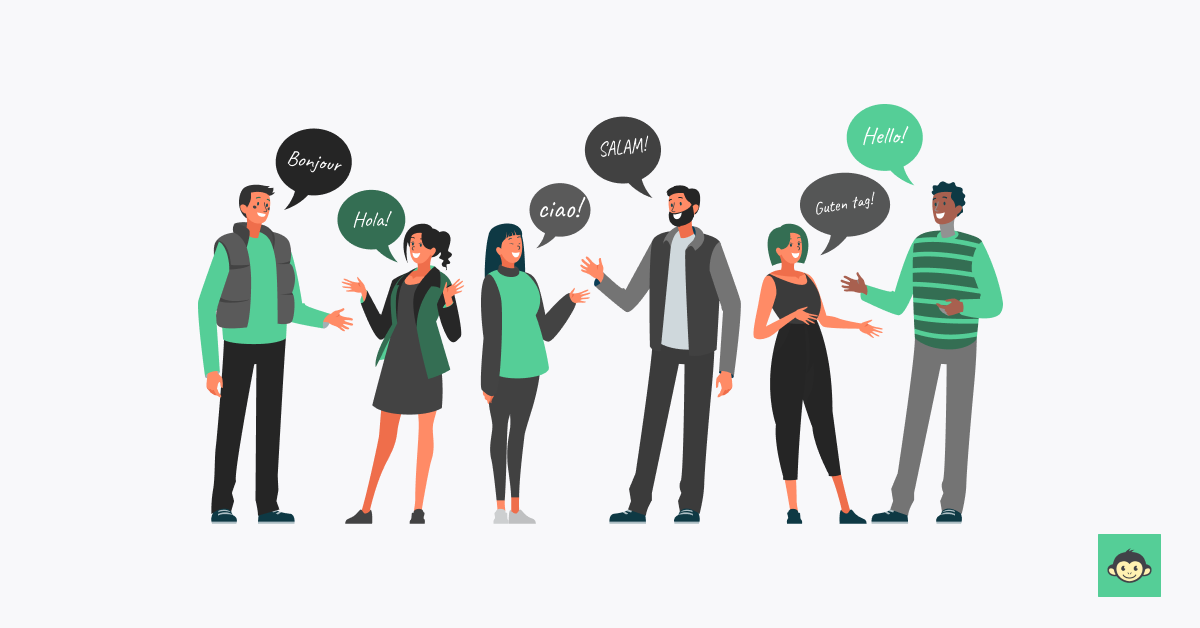
Imagine this: you're crafting a recipe. You don't just throw random ingredients into a pot and hope for the best. You plan, measure, and ensure everything aligns perfectly. The same goes for DEI. A strategic approach means you're not just checking off boxes; you're setting a clear roadmap.
Step one: Leadership buy-in. Imagine trying to build a sandcastle without any sand. Leadership's commitment is that foundational sand. When leaders champion DEI, it sends a message that this isn't an optional side dish—it's the main course.
Step two: Assessment and benchmarking. You can't improve what you don't measure. Conduct an honest assessment of where your organization stands in terms of DEI. Then, set benchmarks and goals. It's like knowing where you want your recipe to end up before you even start cooking.
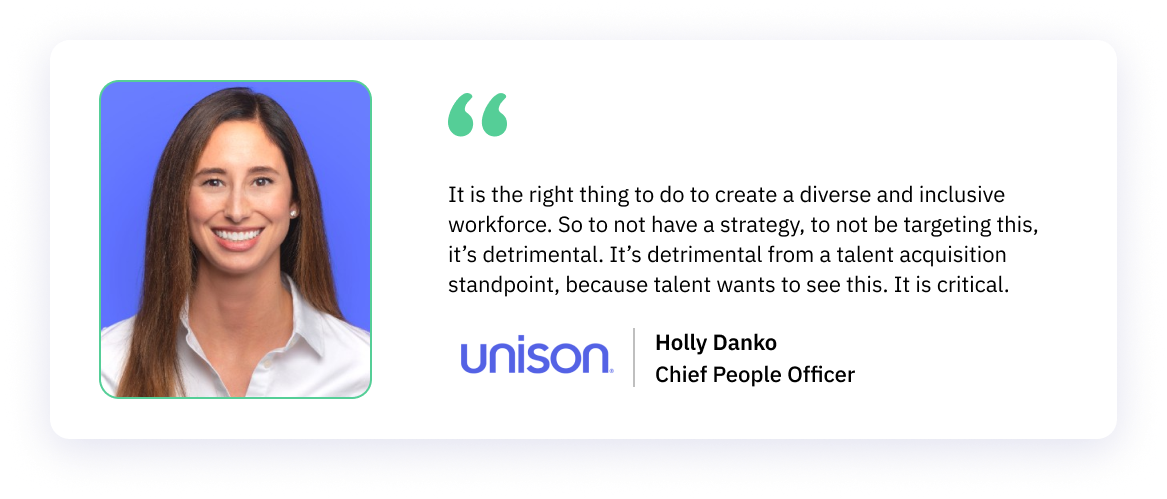
Step three: Customized training. Imagine trying to learn to swim by watching a cooking show. It just doesn't work. DEI training should be tailored to your organization's needs. Customized training ensures everyone is on the same page and equipped with the right tools.
Step four: Accountability and transparency. Just like you'd taste your dish while cooking, track your progress. Hold leadership accountable for meeting DEI goals and communicate updates transparently. This creates a culture of continuous improvement.
Step five: Inclusive policies and practices. If your recipe calls for salt, you don't use sugar. Similarly, your policies and practices should align with your DEI goals. This means fair for hiring managers, their practices, equal pay for employees, and fostering an inclusive work environment.
Step six: Empower employees. A master chef trusts their team. Encourage employees to take an active role in DEI initiatives. Employee resource groups, open forums, and idea sharing empower everyone to contribute to the recipe of an inclusive culture.
So, next time you admire a company's seamless DEI culture, remember that it's not magic; it's strategy. Just like a well-crafted dish, building a DEI culture takes planning, intention, and a dash of commitment from every corner of the kitchen.
DEI training best practices

Implementing DEI (Diversity, Equity, and Inclusion) training programs involves following best practices that enhance their effectiveness and impact. Here are key considerations for designing and delivering DEI training:
Leadership support: Obtain buy-in and active support from organizational leaders to ensure commitment and allocate necessary resources for successful DEI training implementation.
Customization: Tailor the training to the specific needs and context of the organization, considering the industry, workforce demographics, and existing workplace diversity training challenges.
Interactive and engaging content: Incorporate interactive activities, case studies, and real-world examples to engage participants and encourage active learning, reflection, and application of concepts.
Incorporate experiential learning: Use simulations, role-playing, and group exercises to provide hands-on experiences that deepen understanding of DEI issues and build empathy.
Long-term approach: View DEI training as an ongoing process rather than a one-time event. Offer follow-up sessions, refresher courses, and continuous learning opportunities to reinforce learning and behavior change.
Diverse training facilitators: Ensure that facilitators reflect the diversity of the organization and possess the expertise and cultural competence necessary to deliver the training effectively.
Create safe learning spaces: Foster an inclusive and psychologically safe environment during training sessions, allowing participants to express themselves, share experiences, and ask questions without fear of judgment or reprisal.
Measurable outcomes: Establish clear goals and metrics to evaluate the impact of the training program on employee behaviors, attitudes, and organizational culture. Regularly assess and track progress to gauge effectiveness.
Integrate DEI into organizational practices: Connect DEI training to broader organizational practices, policies, and initiatives. Embed DEI principles into recruitment, talent development, performance evaluation, and decision-making processes.
Continuous evaluation and improvement: Collect feedback from participants, track outcomes, and regularly evaluate the training program's effectiveness. Use this feedback to refine and improve future iterations of DEI training.
Top 13 DEI training activities to try in 2023

Implementing engaging and effective DEI (Diversity, Equity, and Inclusion) training activities in 2023 can foster a more inclusive workplace culture. Here are 13 activities to consider:
- Interactive case studies: Use real-life scenarios to explore bias, discrimination, and inclusive decision-making, encouraging participants to reflect and discuss strategies for addressing such situations.
- Diversity panels: Organize panels featuring individuals from diverse backgrounds to share their experiences, challenges, and perspectives, promoting empathy and understanding among participants.
- Privilege walk: Conduct a privilege walk activity to raise awareness about privilege and its impact on opportunities, facilitating discussions on systemic advantages and disadvantages.
- Inclusive language workshop: Offer training on using inclusive language, including gender-neutral pronouns, respectful terminology, and avoiding microaggressions.
- Implicit bias training: Provide education on unconscious biases through interactive exercises, videos, and discussions, enabling participants to recognize and address preferences in themselves and others.
- Cultural celebrations: Organize events celebrating diverse cultures, allowing employees to share their traditions, cuisine, and experiences, fostering appreciation and cross-cultural understanding.
- Allyship workshops: Conduct workshops that equip participants with allyship skills, including active listening, advocacy, and leveraging privilege to support underrepresented groups.
- Inclusive hiring simulation: Create a hiring simulation that challenges participants to identify biases and select candidates based on skills and qualifications rather than demographic factors.
- Diversity book club: Establish a book club where participants read and discuss literature related to diversity, equity, and inclusion, promoting ongoing learning and dialogue.
- Intersectionality training: Provide training on intersectionality to help participants understand how various identities intersect and influence individuals' experiences and perspectives.
- Social identity mapping: Engage participants in creating personal social identity maps to explore the different aspects of their identities and how they intersect with others.
- Inclusive team-building activities: Organize team-building exercises that encourage collaboration, diversity of thought, and appreciation of individual strengths and perspectives.
- Inclusive leadership development: Offer workshops and coaching to develop inclusive leadership skills, focusing on empowering diverse teams, addressing biases, and creating inclusive work environments.
- Story circles: Facilitate small group discussions where participants share personal stories related to diversity, equity, and inclusion. This activity encourages open dialogue, builds empathy, and allows individuals to connect on a deeper level, fostering a more inclusive culture.
- Cultural competency challenges: Create challenges that encourage participants to explore different cultures, traditions, and perspectives. These challenges could involve trying new cuisines, learning about holidays, or researching cultural norms.
- Inclusive art activities: Engage participants in creative activities that explore DEI concepts. Provide art supplies and prompts that encourage them to express their thoughts and feelings about diversity and inclusion through visual art, fostering a unique and introspective way of learning.
- Impact projects: Task participants with designing and implementing projects that address specific diversity and inclusion challenges within the organization.
Remember to customize these activities to suit your organization's specific needs and culture.
What makes DEI training successful?
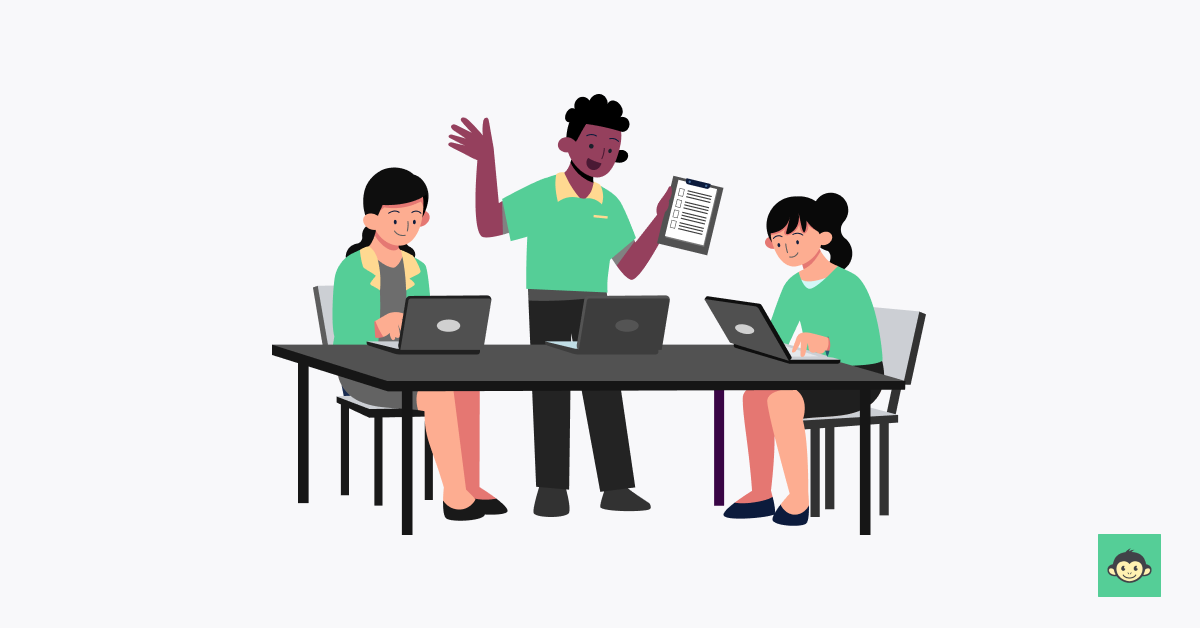
Have you ever been to a training session that left you more confused than when you walked in? We've all been there. But let's talk about DEI (Diversity, Equity, and Inclusion) training that actually sticks and creates a ripple effect of positive change. Here's what makes DEI training successful:
- Relevance to the audience: One size doesn't fit all in DEI training. It's like giving a surfboard to someone who's never seen the ocean. Effective training understands the needs, challenges, and goals of the audience. Whether it's tailored for different roles, levels, or backgrounds, relevance is key.
- Interactive engagement: If you're being talked at for hours, your mind starts plotting an escape route. Successful DEI training gets you involved. It throws you into scenarios, encourages discussions, and challenges your thinking. It's like a workout for your empathy and awareness muscles.
- Real-life application: Ever attended a workshop and thought, "That's nice, but how do I use this in the real world?" Successful DEI training doesn't leave you hanging. It gives you actionable strategies. It teaches you how to spot bias, how to speak up against discrimination, and how to create inclusive spaces.
- Leadership involvement: Imagine learning to dance from someone who's never moved to music. Successful DEI training involves leaders who walk the talk. When leadership champions DEI principles and behaviors, it sets the tone for the entire organization.
- Ongoing commitment: Effective DEI training isn't a one-hit wonder. It's like planting a garden—you don't water it once and expect a forest. Continuous learning, follow-up sessions, and integrating DEI principles into everyday practices keep the momentum going.
DEI training outcomes
When it comes to DEI (Diversity, Equity, and Inclusion) training, the "point" is more than just checking a box. Let's explore the tangible outcomes that effective DEI training can bring to the table:
- Improved awareness: Ever realized you were carrying a bias you never knew existed? DEI training shines a light on unconscious biases, making you aware of them. This awareness is like having a compass that guides you toward more inclusive interactions.
- Empathy amplification: Walk a mile in someone else's shoes, they say. DEI training takes you on that walk. It shares stories and experiences from diverse backgrounds, boosting your empathy and helping you better connect with colleagues.
- Inclusive language mastery: Words matter. DEI training equips you with the vocabulary to use inclusive language. It's like replacing bland ingredients in your communication with spices that add flavor and respect to your conversations.
- Conflict resolution skills: Have you ever witnessed a tense situation and didn't know how to defuse it? DEI training often includes conflict resolution strategies, helping you navigate difficult conversations and maintain a harmonious environment.
- Allyship activation: Sometimes, all someone needs is an ally. DEI training teaches you how to be that ally. It's like learning to stand up and offer an umbrella to someone caught in a storm.
- Enhanced team dynamics: Diversity can either be a recipe for chaos or a catalyst for innovation. DEI training transforms it into the latter. It teaches you how to harness the power of diverse perspectives, leading to more effective teamwork.
- Reduced turnover: Imagine investing time and resources into cultivating talent only to watch it walk out the door. DEI training contributes to a more inclusive environment, making employees feel valued and less likely to seek opportunities elsewhere.
- Improved organizational performance: Diversity isn't just the right thing to do—it's good for business. DEI training enhances creativity, fosters innovation, and attracts top talent. It's like giving your organization a competitive edge.
- Stronger company reputation: In a world where values matter, companies that prioritize DEI are viewed more favorably. DEI training aligns your actions with your values, enhancing your reputation in the eyes of clients, customers, and potential employees.
- Cultural transformation: Effective DEI training is more than a workshop—it's a catalyst for cultural change. It helps organizations transition from merely talking about diversity to truly living and breathing it.
Role of DEI software in measuring and improving DEI in your organization
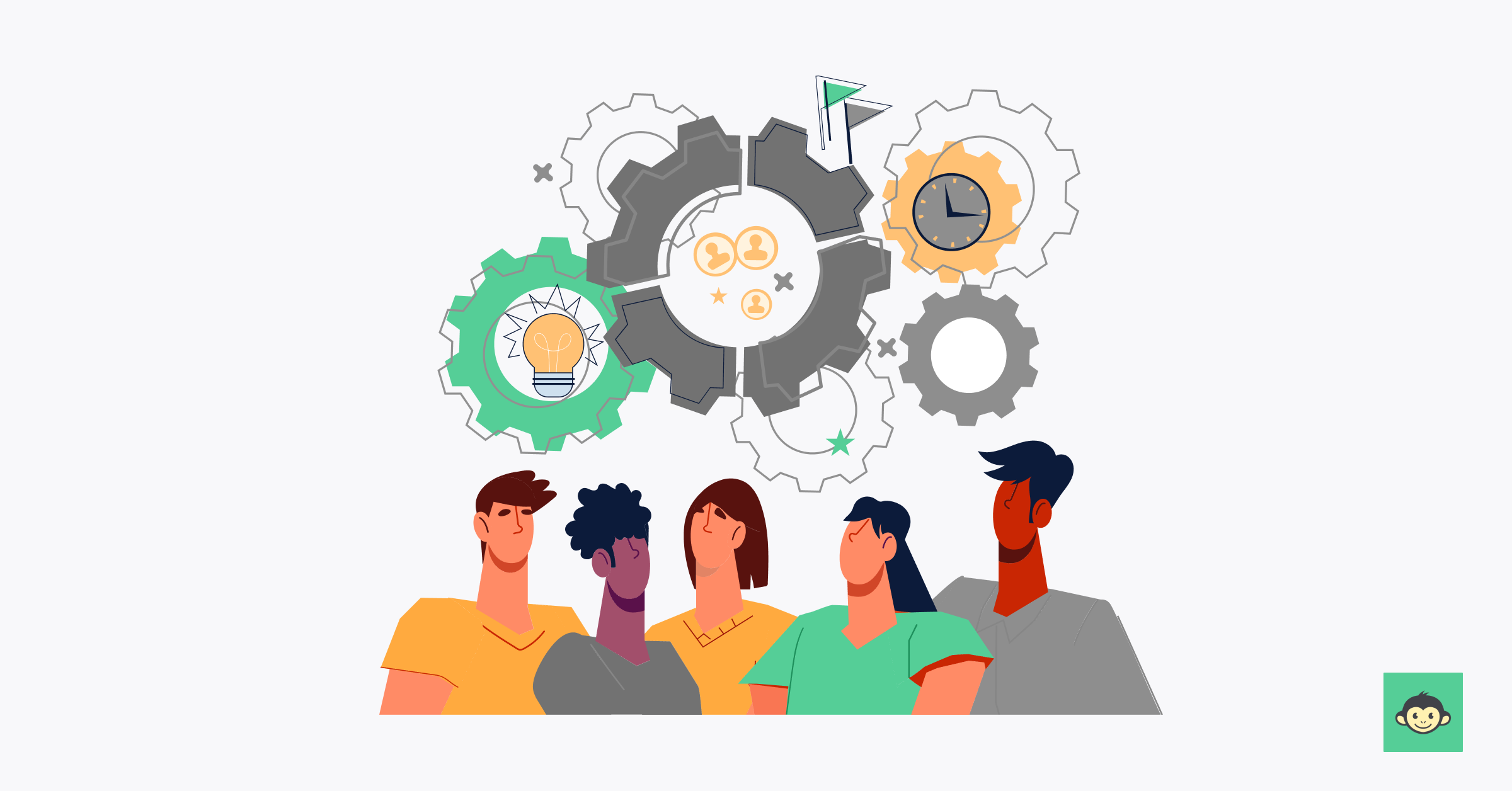
DEI software plays a crucial role in measuring and improving DEI (Diversity, Equity, and Inclusion) in organizations. These tools automate data collection, analysis, and reporting, providing insights into key metrics such as representation, pay equity, and employee engagement.
They help identify areas for improvement, track progress, and inform targeted interventions. DEI software enables organizations to establish benchmarks, set goals, and monitor diversity initiatives effectively.
It facilitates transparency, accountability, and data-driven decision-making, supporting organizations in creating more inclusive workplaces and driving meaningful change.DEI training is an essential tool for fostering inclusive cultures, mitigating biases, and driving organizational success.
By prioritizing DEI training, organizations can create more equitable workplace environments, attract diverse talent, enhance innovation, and achieve better business outcomes.
FAQs
1. What is DEI training and why is it important?
DEI training program, which stands for Diversity, Equity, and Inclusion training, is a structured program aimed at educating employees and leaders about the significance of embracing diverse perspectives, fostering equitable treatment, and creating an inclusive work environment. It's important because it helps organizations address biases, promote fairness, and leverage the strengths of a diverse workforce.
2. How to implement effective DEI training in the workplace?
Implementing effective DEI training involves several key steps. Firstly, assess the current state of your organization's diversity and inclusion efforts. Tailor the training content to your employees' needs and roles. Incorporate interactive activities, real-life scenarios, and discussions to engage participants. Make sure leadership is actively involved and committed to the training process. Provide ongoing support, resources, and opportunities for employees to continue learning about DEI.
3. What are the key components of successful DEI training?
Key components of successful DEI training include raising awareness about unconscious bias and its impact, providing strategies for recognizing and addressing bias, teaching inclusive communication and language, exploring the concept of intersectionality, and promoting allyship and advocacy for underrepresented groups. Effective training also covers topics like systemic racism, LGBTQ+ inclusion, and accommodations for diverse needs.
4. Where can I find DEI training programs and resources?
You can find DEI training programs and resources through various avenues. Look for reputable consulting firms, training organizations, or diversity and inclusion specialists that offer customized training solutions tailored to your organization's needs. Online platforms and e-learning courses can also provide comprehensive DEI training modules.
5. What are the benefits of diversity, equity, and inclusion training?
The benefits of diversity, equity, and inclusion (DEI) training are substantial. It fosters a more inclusive workplace culture where employees from diverse backgrounds feel valued, respected, and empowered. DEI training enhances teamwork by promoting understanding and effective communication across differences. It contributes to increased creativity and innovation as diverse perspectives lead to more comprehensive problem-solving.
6. What is DEI program?
A diversity, equity, and inclusion training program in the workplace is a strategic initiative designed to foster diversity, equity, and inclusion among employees. It encompasses policies, training, and practices aimed at promoting an inclusive culture, ensuring equal opportunities, and addressing systemic biases. By cultivating a respectful and supportive environment, DEI programs enhance employee engagement, drive innovation, and contribute to overall organizational success.
7. What are DEI practices?
DEI practices in the workplace are actionable strategies and policies implemented to promote diversity, equity, and inclusion. These practices include unbiased recruitment processes, equitable pay structures, inclusive leadership training, and creating safe spaces for dialogue. By embedding these practices into daily operations, organizations ensure that all employees feel valued, respected, and supported, fostering a more dynamic and productive work environment.
8. Is DEI training effective?
DEI training in the workplace is effective when it is comprehensive and ongoing. It raises awareness, mitigates biases, and fosters inclusive behavior among employees. Studies show that well-implemented DEI training enhances employee engagement, reduces conflicts, and improves overall workplace culture. For maximum effectiveness, it should be integrated into the organization's broader DEI strategy and supported by leadership commitment.
9. How often should diversity training take place?
Diversity training in the workplace should take place regularly, ideally annually, with supplemental sessions as needed. Continuous training reinforces DEI principles, adapts to evolving workplace dynamics, and addresses new challenges. Regular sessions ensure sustained awareness, skill development, and a lasting impact on the organizational culture. Integrating DEI training into ongoing professional development programs further enhances its effectiveness.
10. Who should participate in DEI training?
In the workplace, DEI training should include all employees, from entry-level staff to senior leadership. Comprehensive participation ensures that everyone understands and commits to DEI principles, fostering a truly inclusive environment. Involving all levels of the organization, especially leaders, underscores the importance of DEI and promotes a unified approach to creating a respectful and equitable workplace culture.



